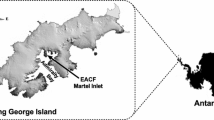Abstract
The effect of malathion on rats (75 and 38 mg/kg bwt), aquatic organisms (100 to 0.001 mg/L), and cells in tissue culture (1000 to 1 ppm) was studied. The conventional toxicological tests conducted for 90 days on rats yielded negative results. ChE activity was determined in plasma, liver, brain and erythrocyte samples. It was significantly reduced in the erythrocytes of animals treated with the larger dose for 21 days and in the cerebral cortex of rats fed either of the doses. ChE activity of rats consuming malathion for 90 days did not differ significantly from that of the controls. In contrast, the psychophysiological examinations utilized in the experiments indicated abnormalities within 21 days. Alterations were observed in the EEG and EMG records after 90 days of feeding.
Malathion had a definitely harmful effect on phylogenetically and ontogenetically young aquatic organisms, as well as on the cells of monkey kidney culture. The latter finding suggests that the preparation has a direct destructive effect on cells.
Although it is not suggested that malathion should be regarded a toxic agent thus requiring limitation of application, attention is directed to the fact that inconsiderate use of the preparation may involve potential dangers for man and his environment.
Similar content being viewed by others
References
Anonymous: Evaluating and testing new insecticides. WHO Chronicle23, 530 (1969).
Anonymous: Persistent insecticides: protectors of health and environmental pollutants. WHO Chronicle25, 206 (1971).
Anonymous: Pesticides in the modern world. p. 19. London Newgate (1972).
Bordás, S.: Veszélyes növényvédöszerek, 6 ed. Budapest Mezögazd. Kiad. (1967).
Csonka, É., and P. Ruzicska: Examination of the susceptibility to virus infection of heteroploid monkey kidney cell strains. Acta Microbiol. Acad. Sci. hung.11, 299 (1965).
Dési, I.: Detection of early adverse effects of pesticides on EEG and CNS functions. In: Horvát, M.: (ed.) Adverse effects of environmental chemicals and psychotropic drugs. Amsterdam Elsevier (1973).
Dési, I., I. Farkas, Gy. Simon, and V. Czieleszky: Untersuchungen des neurotoxischen Wirkungen des Phosphatesters Bromophos. Int. Arch. Arbeitsmed.28, 203 (1971).
Dési, I., P. Kertai, I. Farkas, and Zs. Muskó: The process of learning in rats undergoing prolonged treatment with psychotropic agents. Psychopharmacologia (Berlin)18, 144 (1970).
Dura, G., and I. Dési: Gyors és érzékeny módszer a peszticidek toxicitás vizsgálatára: a szövettenyészetre gyakorolt hatás. Egészségtudomány (in press).
Faragó, A.: Fatal, suicidal malathion poisonings. Arch. Toxicol.23, 6 (1967).
Goldin, A. R., A. H. Rubinstein, and B. A. Bradlow: Malathion poisoning with special reference to the effect of cholinesterase inhibition on erythrocyte survival. New. Eng. J. Med.271, 1289 (1964).
Goldman, H., and M. Teitel: Malathion poisoning in a 24-month-old child following accidental ingestion. J. Pediat. S. Louis52, 76 (1958).
Hassan, A., and C. Cueto: Biochemical effects in the rabbit of repeated administration of mixture of DDT, carbaryl, and parathion. Zeitschr. Naturforsch.25 b, 521 (1970).
Hestrin, S.: The reaction of acetylcholine and other carboxilic acid derivates with hydroxylamines and its analitical application. J. Biol. Chem.180, 249 (1949).
Healey, J. K.: Ascending paralysis following malathion intoxication: a case report. Med. J. Australia4 b, 765 (1959).
Maier-Bode, H.: Pflanzenschutzmittel-Rückstände. Verl. E. Ulmer Stuttgart (1955).
McLaughlin, L. A., and G. H. Synder: Encephalopathy in a child following exposure to malathion. Ochsner Clinic Reports2, 37 (1956).
Metcalf, D. R., and J. H. Holmes: EEG, psychological and neurological alterations in humans with organophosphorus exposure. Ann. New York Acad. Sci.160, 357 (1969).
Mihók, O., M. Olcsváry, and E. Papp: Foszforsavészter tartalmu növényvédöszerekkel történt mérgezések klinikuma. Orv. Hetilap112, 2828 (1971).
Muhtarova, N. D., and O. T. Kostiuk: K Neurologitcheskoi harakteristike vosdestvia kompleksa hlor- i phosphororganitcheski pesticidov. Gigiena primenenia, toksikologia pesticidov i klinika otravleni 7. tom. Kiev Vniigintox (1969).
Parker, G. F., and W. R. Chatin: A case of malathion intoxication in a ten year old girl. J. Indiana M. Ass.45, 491 (1955).
Paul, A. H.: Poisoning by organo-phosphorus insecticide (malathion). Report of a case. New Zeal. Med. J.59, 346 (1960).
Perkow, V.: Die Insektizide. 2. Aufl. Heidelberg. A. Hüthig Verl. (1968).
Petty, C. S.: Organic phosphate insecticide poisoning. Am. J. Med.24, 467 (1958).
Pukach, L. P. and V. D. Sahov: Epileptiformnie propadki pri ostrih otravlenia phosphororganicheskimi insekticidami. Voenno-Medicinski Journ.11, 67 (1971).
Ramu, A., and H. Drexler: Hyperglycemia in acute malathion intoxication in rats. Isr. J. Med. Sci.9, 635 (1973).
Ramu, A., A. E. Slonim, M. London, and F. Eyal.: Hyperglycemia in acute malathion poisoning. Isr. J. Med. Sci.9, 631 (1973).
Ruzicska, P.: Establishment of cell strains from primary monkey-kidney cell cultures. Acta morph. Acad. Sci. hung.12, 275 (1964).
Simon, Gy., and M. Winter: The effect of antihistamines on red blood cell acetylcholinesterase activity in vitro. Biochem. Pharmac.19, 1843 (1970).
Tuthill, J. W.: Malathion poisoning. N. England J. Med.258, 1018 (1958).
Uhlir, F. H., and L. Hosak: Akutni psychoza pri ostravé phosphotionem. Cesk. Psychiat.60, 306. (1964).
Várnai, L.: Adatok a Malathion mérgezés kórbonctanához és szövettanához. Orv. Hetilap,112, 1651 (1971).
Wenzl, J. E., and E. C. Burka: Poisoning from a malathion aerosol mixture. A case report. J. Am. Med. Soc.182, 495 (1962).
Wetterberg, L., and P. Wising: Malathion poisoning by a killing preparation. Svensk. Lakartidn.59, 1322 (1962).
Witter, R. F., and T. B. Gaines: Inhibition of brain and plasma cholinesterases and paralitic effects of organic phosphate compounds. Federation Proceedings.19, 275 (1960).
Author information
Authors and Affiliations
Rights and permissions
About this article
Cite this article
Dési, I., Dura, G., Gönczi, L. et al. Toxicity of malathion to mammals, aquatic organisms and tissue culture cells. Arch. Environ. Contam. Toxicol. 3, 410–425 (1975). https://doi.org/10.1007/BF02220812
Received:
Accepted:
Issue Date:
DOI: https://doi.org/10.1007/BF02220812



